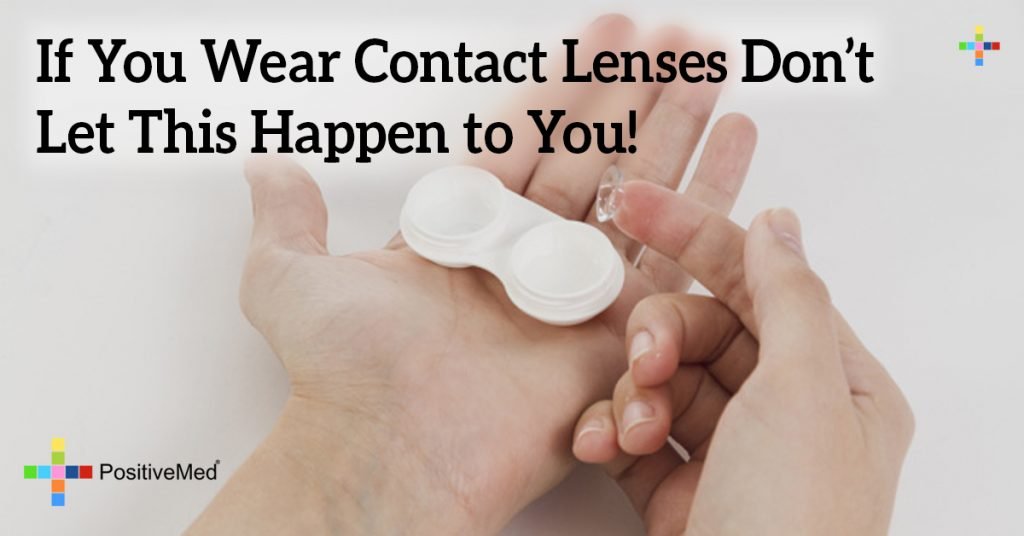
If You Wear Contact Lenses Don’t Let This Happen to You!
A recent medical case of an otherwise young and healthy Cincinnati resident shows that proper care of contact lenses is essential to eye health.Viscous, runny exudate began to pour from his eye, redness appeared in the sclera (the white portion of the eye), and he suffered a sinus infection. Because he frequently works outdoors, the man assumed he had a bad allergy. Unfortunately, he became completely blind in the left eye. A visit to the doctor concluded that the he developed a frightening eye infection from improper contact lens use.
While contact lenses are safely used by millions of people every day, they do carry a risk of eye infection. The most common infection related to contact lens use is keratitis, an infection of the cornea (the clear, round dome covering the eye’s iris and pupil). Keratitis can have multiple causes, including herpes, bacteria, fungus and microbes (such as acanthamoeba—a very difficult infection to treat). Keratitis is the most serious complication of contact lens wear. In severe cases, it can lead to corneal scarring that impairs vision, and may lead to the need for a cornea transplant.
Avoid Sleeping or Napping in Any Contact Lenses
Although the extended wear contact lenses were FDA-approved for overnight use, the American Academy of Ophthalmology (AAO) says people should err on the side of caution with these lenses. An infection may develop under the lens left in the position in 24 hours or less. When lenses are regularly removed and cleaned, the eyes are usually protected from such infections.
The Centers for Disease Control; Prevention (CDC) report that approximately 40.9 million people wear contact lenses in the nation. A CDC survey (collaboratively performed with CLAY, the Contact Lens Assessment Youth Group) shows that respondents are likely to break the rules for safe contact lens use from time to time. The CDC estimates that about half of contact lens wearers in the study sleep in their lenses and more than 82 percent use a contact lens case for longer than recommended periods.
Most contact lenses are designed to exchange oxygen with the eye, but all effectively create a barrier between the eye and the surrounding environment. The contact lens wearer risks the development of a bacterial infection when lenses are improperly stored.
Contact Lens Options:
Depending on the type of lenses one wears it is recommended to follow the proper cleaning instructions for the specific lens.
Daily wear contact lenses.
Daily wear contact lenses have to be taken out and disinfected every night and are replaced on a set schedule. The replacement time can vary widely by type and brand, from every two weeks to every three months.
Extended wear contact lenses.
This type of contact lens is designed to be worn overnight though they need to be removed at least once a week for cleaning and disinfection. However, many eye professionals do not encourage their use. When you sleep with your contact lenses in, you reduce the amount of oxygen to the eyes, making your eyes more vulnerable to infection — especially corneal infection.
Disposable contact lenses.
Daily disposable lenses get tossed every day after use, so no maintenance is involved. Disposables that are replaced weekly or monthly require the same regular care as daily wear lenses. Disposables are a good option for people with allergies or other conditions that exacerbate the formation of protein deposits from the tear film.
Toric contact lenses.
This type of lens is used to correct astigmatism, a condition in which vision is blurred because of an irregularly shaped cornea or lens inside the eye.
Multifocal contact lenses.
People with presbyopia — a condition that occurs as people get older and their eyes have a harder time bringing close objects into focus. Replace contact lenses with a fresh pair as prescribed by your eye care professional. When not changing into a fresh pair, remove your contact lenses between uses and properly clean, disinfect and store them with a cleaning system.
RELATED ARTICLE: 10 Ways to Care for Your Eyes Naturally
Contact Lens Care
Single-use contact lenses are a good idea, but some people wear them past manufacturers’ recommended period. Extended wear lenses and other contact lenses should be regularly replaced. For instance, if the user uses a two-week extended wear lens, it is important to replace them at two weeks. Don’t continue to wear the lenses for six or four weeks.
Doing so is one of the easiest ways to contract a serious bacterial eye infection.
Users should not rinse lenses with tap water as a means to clean or refresh them. Tap water contains bacteria and other organisms. Acanthamoeba, a parasite, is frequently found in municipal water supplies. The organism can cause eye infections leading to reduced vision or blindness. Cleaning lens cases in tap water is also a bad idea, according to the AAO.
Don’t risk your eyesight. Contact lenses wearers must use the proper cleaning solution to regularly clean contact lenses. Lens cases should be thrown away and replaced after three months’ use.





